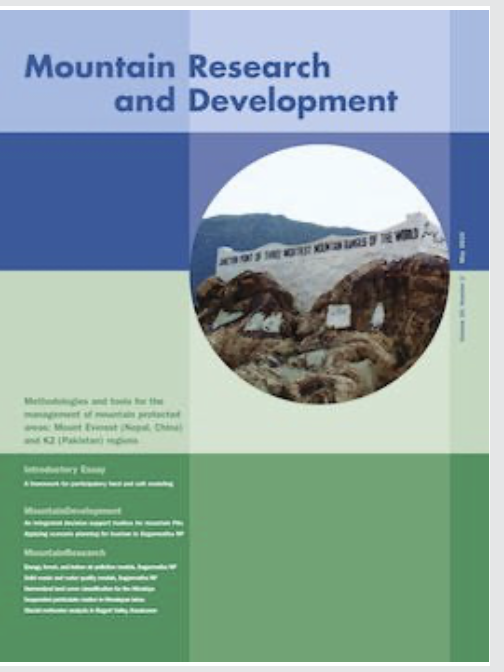Contact for the resource
International Centre for Integrated Mountain Development (ICIMOD)
2 record(s)
Type of resources
Available actions
Topics
Keywords
Contact for the resource
Provided by
Update frequencies
Status
-

New tools and methodologies are required in systemic planning and management of mountain protected areas. Among others we propose here a decision support toolbox (DST) conceived as an integrated collection of both soft and hard system methodologies, consisting of participatory and computer-based modules to provide a set of integrated, self-contained tools and approaches to support decision-making processes in the management of mountain protected areas. The Sagarmatha National Park and Buffer Zone (SNPBZ) in Nepal was taken as a pilot case. A number of participatory exercises such as participatory 3-dimensional modeling, scenario planning, and qualitative modeling were carried out to understand social-ecological processes and generate a systemic view over space and time. The qualitative models were then converted into computer-based system dynamics models. The design and development of DST software were carried out with an incremental and modular approach. This process involved stakeholder analysis and decision-making processes through a series of consultations. The software was developed with the main modules including scenario analysis, spatial analysis, and knowledge base. The scenario analysis module runs system dynamics models built in Simile software and provides functions to link them with spatial data for model inputs and outputs. The spatial analysis module provides the basic geographic information system functions to explore, edit, analyze, and visualize spatial information. The knowledge base module was developed as a metadata management system for different categories of information such as spatial data, bibliography, research data, and models. The development of DST software, especially system dynamics modeling and its linkage with spatial components, provided an important methodological approach for spatial and temporal integration. Furthermore, training and interactions with park managers and concerned stakeholders showed that DST is a useful platform for integrating data and information and better understanding ecosystem behavior as a basis for management decisions.
-

The aim of this contribution is to present the research activities which will be carried out in the frame of the Project “Institutional Consolidation for the Coordinated and Integrated Monitoring of Natural Resources towards Sustainable Development and Environmental Conservation in the Hindu Kush - Karakoram-Himalaya Mountain Complex”. The Project will be performed within the cooperation of four scientific partners: IUCN (International Union for the Conservation of Nature and Natural Resources), ICIMOD (International Centre for Integrated Mountain Development), Ev-K2-CNR and CESVI (NGO, Cooperazione e Sviluppo, onlus) with the involvement of international researchers. The local management will be provided in Nepal by the Sagarmatha National Park (SNP), in Pakistan by the Central Karakoram National Park (CNKP) and in Tibet Autonomous Region (China) by the Quomolongma Nature Preserve (QNP). This contribution will provide an overview about the research issues (on forests, biodiversity, glacier changes, livelihoods) mainly based on remote sensing technologies which could be successfully applied on CNKP. The need for integrating remote sensing data and field activities are presented as well. The applied image processing techniques (i.e. radiometric normalization, image geometric rectification and thematic classification) are introduced with an emphasis on the key role played by acquiring field data and evaluating the accuracy. The basis of this discussion is the creation of some base thematic maps realised mainly from remote sensing data.
